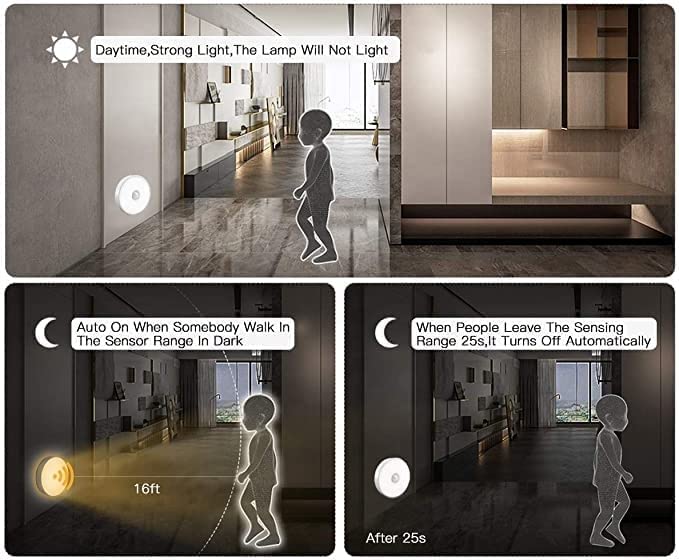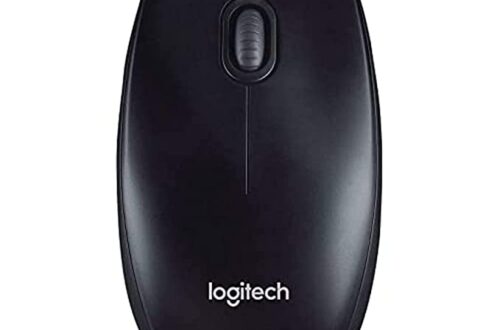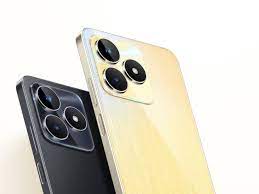
Security Lights: Indoor Motion Sensor Lights 2024 for Enhanced Security
Table of Contents
Introduction
Say Goodbye to Dark Corners: The Ultimate Guide to Choosing the Perfect Indoor Motion Sensor Light for security.
In today’s world, home security is of utmost importance. Every homeowner wants to ensure the security of their loved ones and protect their valuable possessions. One effective way to enhance the security of your home is by installing indoor motion sensor lights. These lights offer convenience, energy efficiency, and an added layer of protection against potential intruders. In this product review blog post, we will delve into the features, benefits, and considerations of indoor motion sensor lights, focusing on the keyword “indoor motion sensor light.”
What Are security lights or Indoor Motion Sensor Lights?
Indoor motion sensor lights or says security lights are lighting fixtures designed to detect movement within a designated area and automatically illuminate the space. These lights use motion sensors to detect the presence of a person or an object and turn on instantly, providing adequate illumination in response to the detected motion.
How Do Indoor Motion Sensor Lights Work?
Indoor motion sensor lights employ various technologies to detect motion. The most common type of motion sensor used is the Passive Infrared (PIR) sensor. PIR sensors detect changes in infrared energy patterns caused by moving objects. When a person or object enters the sensor’s range, it triggers the light to turn on. Once there is no motion detected within a specified period, the light automatically switches off.
Key Features to Look for
When choosing indoor motion sensor lights, consider the following key features:
a) Sensitivity Adjustment
Look for lights that allow you to adjust the sensitivity of the motion sensor. This feature ensures that the lights are not triggered by small movements or pets, reducing false activations.
b) Range and Coverage Area
Consider the range and coverage area of the motion sensor lights. Different models have varying ranges, so choose one that suits the size of the area you want to cover.
c) Lighting Modes
Some indoor motion sensor lights offer multiple lighting modes, such as continuous illumination or dimmed lighting when no motion is detected. These modes provide flexibility and allow you to customize the lighting according to your needs.
d) Energy Efficiency
Opt for energy-efficient indoor motion sensor lights. Look for lights that use LED bulbs, as they consume less energy and have a longer lifespan compared to traditional incandescent bulbs.
Benefits of Indoor Motion Sensor Lights
Indoor motion sensor lights offer several benefits for homeowners:
a) Enhanced Security
By automatically illuminating dark areas when motion is detected, indoor motion sensor lights act as a deterrent to potential intruders. They provide a sense of security and make your home less attractive to burglars.
b) Convenience and Safety
Motion sensor lights provide hands-free illumination, ensuring that you never have to fumble for a light switch in the dark. They are especially useful in areas such as hallways, staircases, and entryways, where visibility is crucial for safety.
c) Energy Efficiency
Indoor motion sensor lights only activate when motion is detected, minimizing energy wastage. This energy-saving feature not only reduces your carbon footprint but also helps you save on electricity bills.
d) Versatility
These lights can be installed in various locations within your home, including closets, garages, basements, and bathrooms. They are versatile and can adapt to different lighting needs.

Factors to Consider Before Buying
Before purchasing indoor motion sensor lights, take into account the following factors:
a) Purpose and Placement
Identify the specific areas in your home where you require motion sensor lighting. Determine whether you need lights for security purposes or simply for convenience. This will help you choose the appropriate type and placement of the lights.
b) Quality and Durability
Invest in high-quality indoor motion sensor lights that are durable and built to withstand regular use. Look for lights made from robust materials that can withstand environmental conditions.
c) Budget
Set a budget for your purchase and compare different models within your price range. Consider the features and quality offered by each light to make an informed decision.
d) Brand Reputation and Warranty
Research reputable brands known for producing reliable motion sensor lights. Check client audits and evaluations to measure their presentation. Additionally, ensure that the lights come with a warranty to protect your investment.
Installation Process
The installation process for indoor motion sensor lights may vary depending on the model and design. However, most lights can be installed using basic tools and following the manufacturer’s instructions. Here are the general steps involved:
- Gather the required tools – Typically, you will need a screwdriver, wire strippers, and electrical tape.
- Turn off the power – Before working on any electrical installation, ensure that the power to the area is switched off at the circuit breaker.
- Remove the existing light fixture – If you are replacing an existing light, disconnect it from the wiring and remove it.
- Connect the motion sensor light – Follow the manufacturer’s instructions to connect the wires properly and secure the light fixture in place.
- Restore power and test – Once the installation is complete, restore power and test the motion sensor lights to ensure they are functioning correctly.
Customer Reviews and Ratings
Here are some excerpts from customer reviews regarding indoor motion sensor lights:
“Brand A’s movement sensor lights have changed my home’s security. I feel much safer knowing that my property is well-lit at all times.”
Ram Sharma.
“The establishment interaction for Brand B’s lights was direct, and the movement identification is unbelievably precise. I enthusiastically suggest them.”
Teena.
“I’ve attempted a few brands, however Brand C’s lights are by a long shot awesome. The range and coverage area are impressive, and the lights are energy-efficient.”
Anitha.
Maintenance and Troubleshooting Tips
To ensure optimal performance of your indoor motion sensor lights, follow these maintenance and troubleshooting tips:
- Regularly clean the motion sensor lens to remove any dirt or debris that may affect its sensitivity.
- Check the batteries if your lights are battery-powered and replace them when necessary.
- If the lights are not turning on or are triggering false alarms, adjust the sensitivity or range settings.
- In case of technical issues, refer to the manufacturer’s troubleshooting guide or contact their customer support for assistance.

Conclusion
Indoor motion sensor lights provide an effective and convenient way to enhance the security of your home while offering energy efficiency and versatility. By illuminating your surroundings when motion is detected, these lights create a safe haven for you and your family. Consider your specific needs, budget, and quality when selecting indoor motion sensor lights to transform your home into a secure and well-lit sanctuary.
Explore the top 5 GPS tracker devices for efficient tracking and location services.
FAQ’s
How long do motion sensor lights typically last?
The lifespan of motion sensor lights varies depending on the brand and usage. However, LED-based lights can last up to 50,000 hours.
Can indoor motion sensor lights be used outdoors?
Most indoor motion sensor lights are not designed for outdoor use due to potential weather damage. However, there are outdoor-specific models available.
Do motion sensor lights work during the day?
Yes, motion sensor lights can still detect motion and activate during the day. However, some models have a daylight sensor to prevent unnecessary activation.
Can I adjust the duration of how long the lights stay on after detecting motion?
Yes, many motion sensor lights allow you to adjust the duration according to your preference.
Do motion sensor lights consume a lot of electricity?
No, motion sensor lights are energy-efficient as they only activate when motion is detected, minimizing energy usage.
Get Access Now
To transform your home into a safe haven with indoor motion sensor lights, click here to get access now.
Related Post : Top 5 Kids Special Smart Watch : Stay Engaged with Top 5 Smart watch for kids
Best Gaming Laptop 2023 : The best gaming laptops to buy right now
- How Does 5g Technology Enhance the Internet of Things : Unleashing the Power of Things
- How to Activate 5g in Jio Unlimited Data: Exploring Jio 5G Options!
- How to Enable 5g Unlimited Data in Airtel, Supercharge Your Phone with Airtel’s 5G!
- How Can I Activate 5g Instead of Lte, Want Lightning Speed 5G ?
- How Do I Activate 5g on My Iphone 13, Activating 5G on Your iPhone 13
- How to Activate 5g Airtel Unlimited Data, Activating Airtel Unlimited 5G Data (Simple Guide)
- How to Activate 5g Home Internet Verizon, Power Up Your Home with Verizon 5G Home Internet: Activation Guide
- How to Activate 5g Network in 5g Mobile, Activating 5G on Your Phone
- How to Activate 5g Unlimited Data in Airtel Thanks App, Activating Airtel’s Unlimited 5G with the Thanks App!
- How to Activate 5g Welcome Offer in Jio, Tapping into Jio’s 5G Speed: A Guide to the Welcome Offer
- How to Activate Airtel 5g in Airtel Thanks App, Activating Airtel 5G with the Airtel Thanks App!
- How to Activate Airtel 5g Unlimited Data on Iphone, Supercharge Your iPhone with Airtel 5G (if it’s available in your area)!

















5 Comments
Pingback:
Pingback:
Pingback:
Pingback:
Pingback: